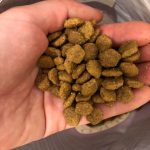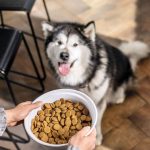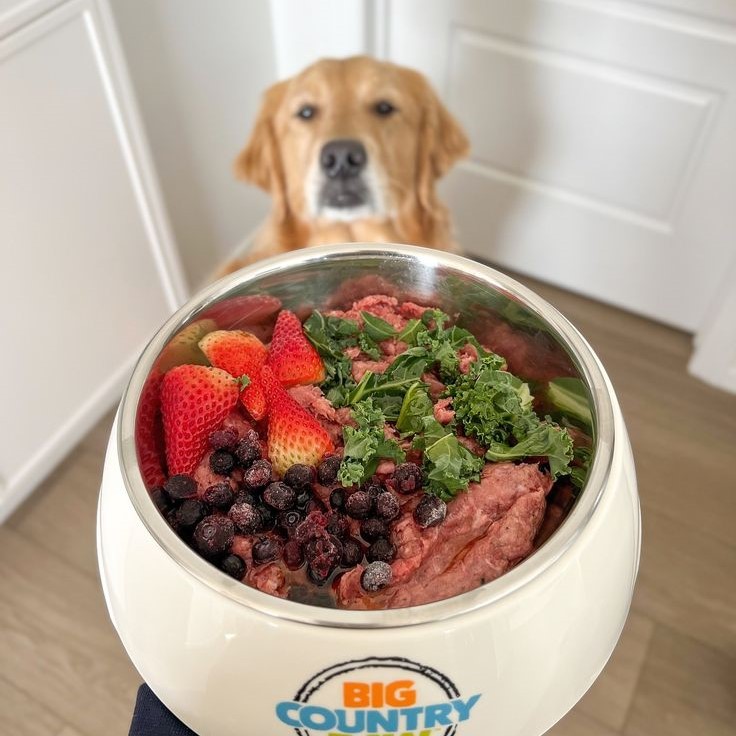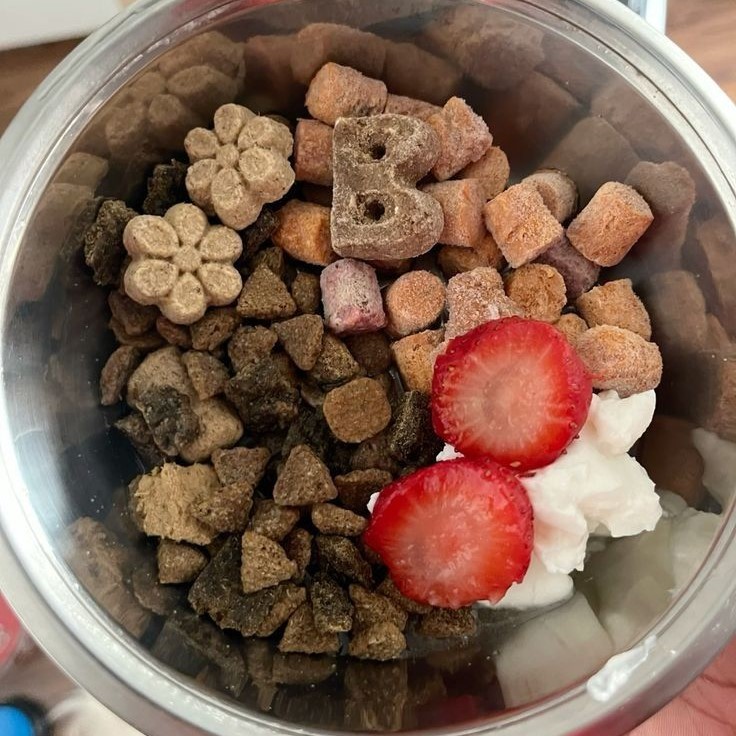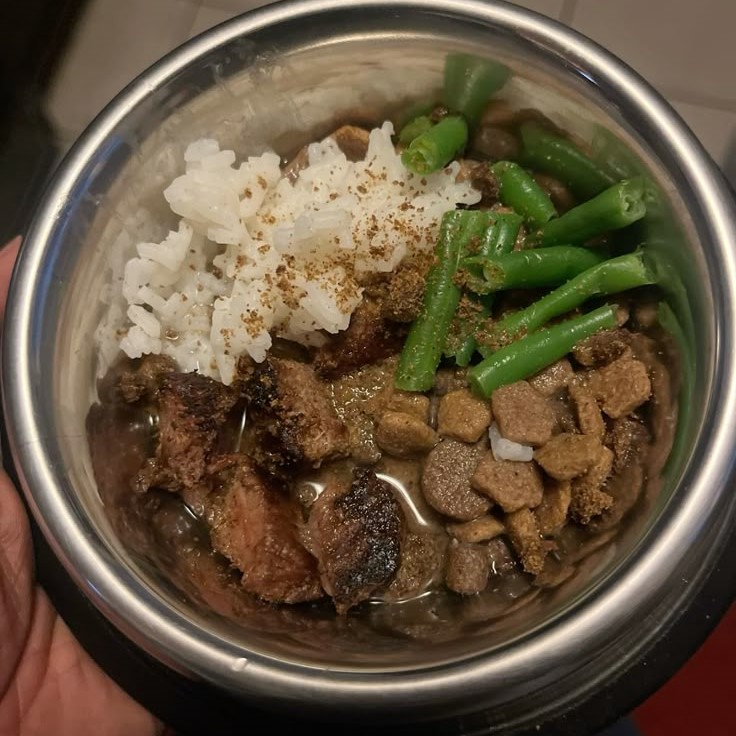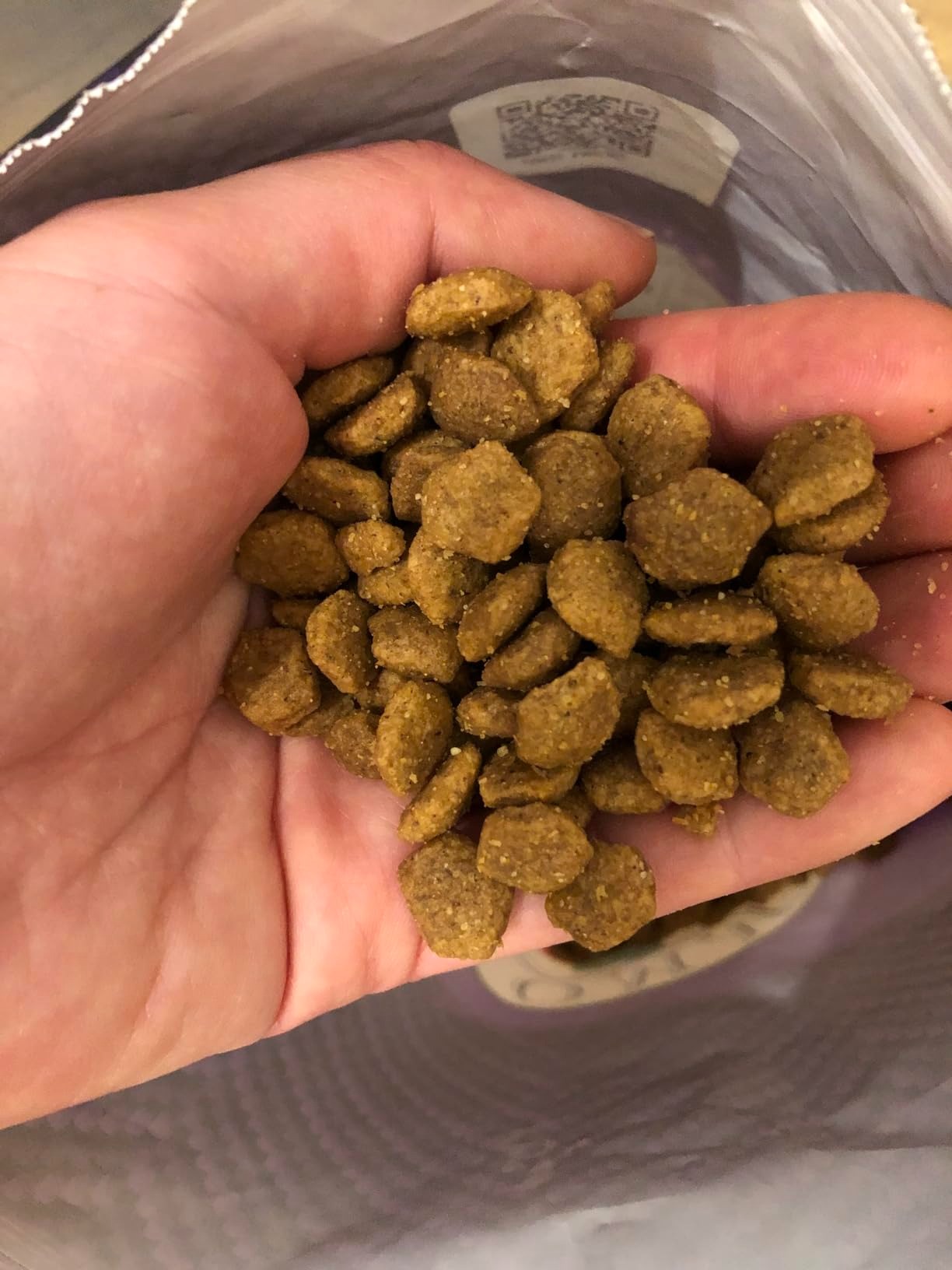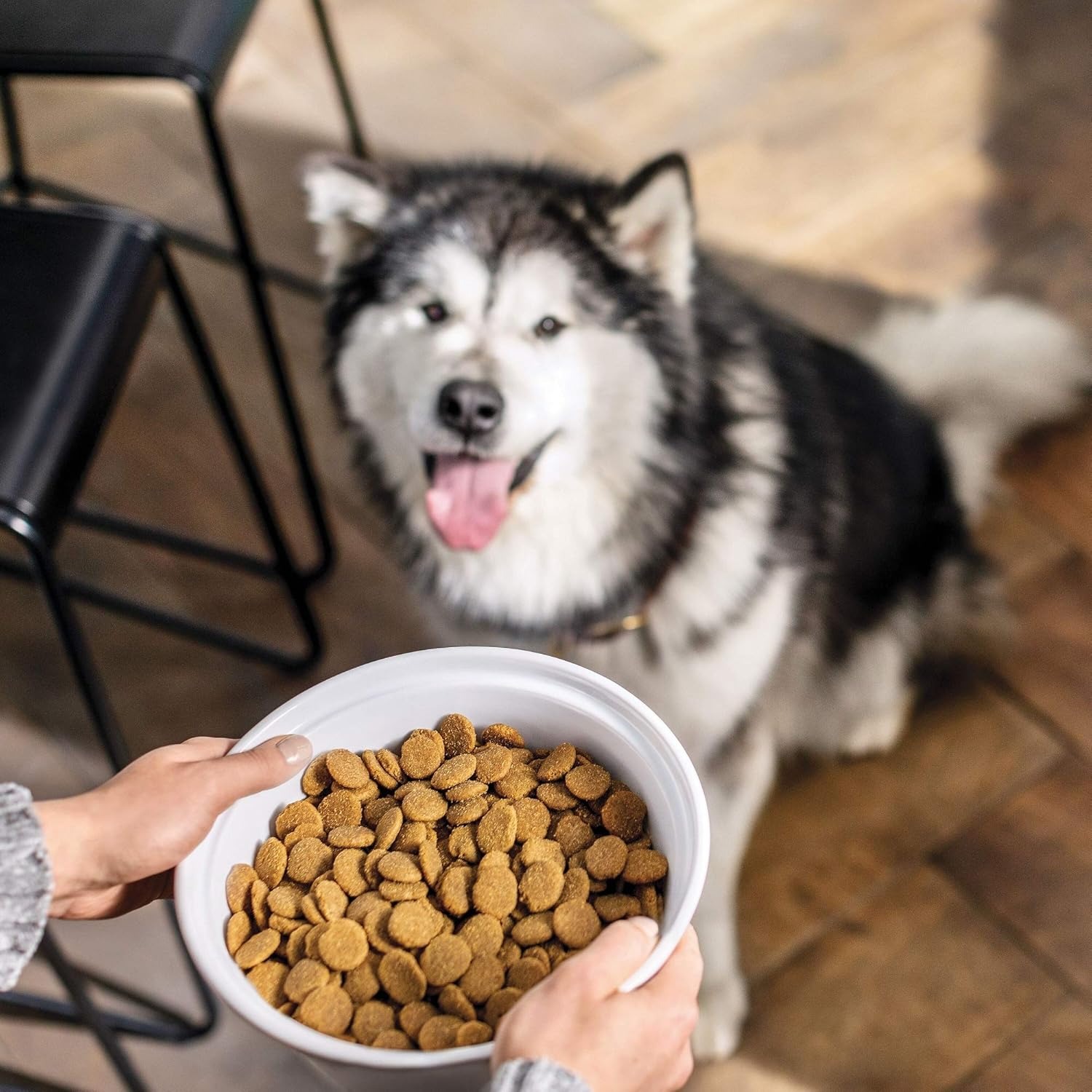Introduction: Understanding the Importance of Dog Food for Dry Skin
Dog owners frequently ask themselves: does dog food for dry skin really matter? The skin is the largest organ of your dog, serving as a barrier against environmental elements and pathogens. If you’re noticing signs of dryness, itchiness, or irritation on your dog’s skin, it might be tied to the food they consume.
This article discusses the vital role that proper nutrition plays in ensuring your canine companion’s skin stays healthy and hydrated. We will cover the types of dog food that can alleviate dry skin, essential nutrients to look for, and additional tips for maintaining your dog’s overall skin health.
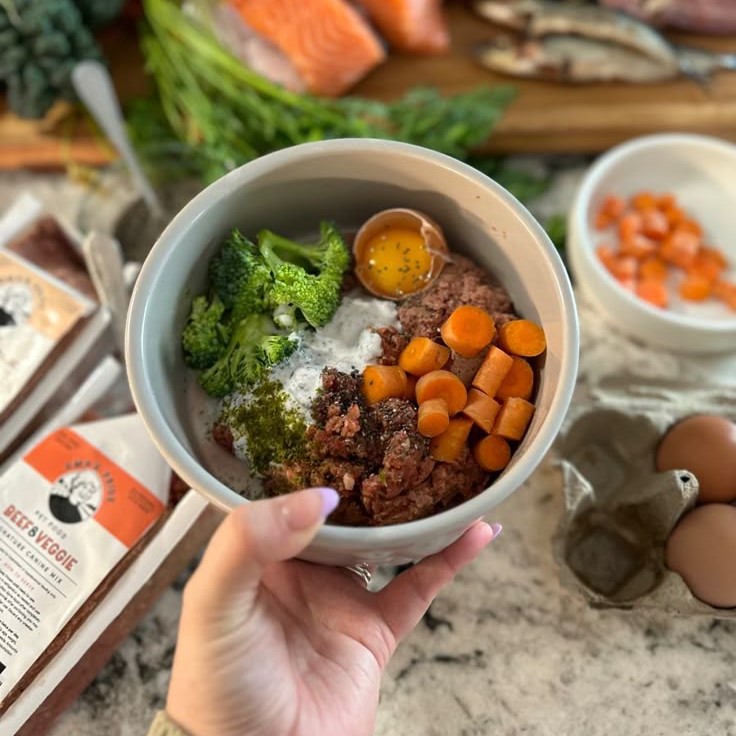
The Basics of Dog Skin Health
For a comprehensive understanding of the significance of dog food in skin health, it’s essential to grasp the basic functions of a dog’s skin.
1. Barrier Protection
The skin acts as a physical barrier and helps protect against pathogens, allergens, and irritants. A healthy skin barrier prevents infections and keeps harmful substances at bay.
2. Temperature Regulation
Dog skin plays a role in regulating body temperature. Sweat glands are limited in dogs, so skin health is integral to their ability to maintain an optimal body temperature.
3. Sensory Functions
The skin is rich in nerve endings that help dogs feel their environment. This sensory input is crucial for their awareness of heat, cold, and potential threats.
4. Hydration and Moisture Retention
A well-nourished skin retains moisture, preventing dryness. Skin cells turn over regularly, requiring nutrients to regenerate properly.
5. Impact of Nutrition on Skin Health
What your dog eats can significantly affect their skin condition. Proper nutrition provides the nutrients needed for skin health, making it critical to consider their diet if dry skin is an issue.
By understanding these fundamentals, we can better appreciate how certain foods and their properties contribute to skin health.
The Nutritional Needs of Dogs for Healthy Skin
Nutrition directly impacts your dog’s skin health; thus, it’s essential to understand the key components of a dog food for dry skin.
1. Essential Fatty Acids
Essential fatty acids such as Omega-3 and Omega-6 are crucial for maintaining skin health. They help reduce inflammation and enhance the barrier function of the skin.
- Sources: Look for dog foods that include fish oil, flaxseed oil, or chicken fat, all of which are rich in these fatty acids.
2. High-Quality Proteins
Proteins serve as the building blocks of skin cells. High-quality protein sources ensure complete amino acid profiles, which contribute to healthy skin.
- Recommendation: Foods that list identifiable meat sources (like chicken, beef, or fish) as the first ingredient are ideal.
3. Vitamins and Minerals
Essential Vitamins for Skin Health
- Vitamin E:
- Role as an Antioxidant: Vitamin E is well-known for its powerful antioxidant properties. It helps neutralize free radicals, which are unstable molecules that can damage skin cells and accelerate the aging process. By protecting skin cells, Vitamin E plays a crucial role in maintaining youthful skin.
- Moisture Retention: In addition to its antioxidant function, Vitamin E helps retain moisture in the skin. By strengthening the skin’s barrier, it reduces transepidermal water loss (TEWL), promoting hydration and overall skin softness.
- Sources of Vitamin E: This essential vitamin can be found in various food sources, including nuts (especially almonds and hazelnuts), seeds, spinach, and avocados. Additionally, topical applications of Vitamin E oil or creams can provide direct benefits to the skin.
- Vitamin A:
- Importance in Cell Turnover: Vitamin A plays a pivotal role in promoting healthy cell turnover. This vitamin encourages the shedding of dead skin cells and stimulates the production of new, healthy skin cells. Enhanced cell turnover helps maintain a vibrant complexion and can reduce the appearance of fine lines and wrinkles.
- Reduction of Acne: Regular intake of Vitamin A can help in managing acne. It helps prevent pores from becoming clogged with dead skin cells and excess sebum, thus minimizing breakouts and promoting clearer skin.
- Food Sources: Dietary sources rich in Vitamin A include carrots, sweet potatoes, leafy greens, and fortified dairy products. Beta-carotene, a precursor to Vitamin A, is found in colorful fruits and vegetables and can be converted into active Vitamin A in the body.
The Role of Zinc in Skin Health
- Critical Mineral for Healing:
- Wound Healing Properties: Zinc is essential for the healing of wounds and skin lesions. It assists in cell division and tissue regeneration, making it a key mineral for repairing damaged skin. When applied topically, zinc can also soothe irritated skin and promote faster healing.
- Anti-Inflammatory Effects: Zinc exhibits anti-inflammatory properties, helping to reduce redness and swelling associated with skin conditions such as acne, eczema, and psoriasis. By calming inflammation, it supports overall skin health and appearance.
- Support for Skin Structure:
- Collagen Production: Zinc plays a vital role in the synthesis of collagen, a protein that provides structure and elasticity to the skin. Adequate levels of zinc contribute to maintaining skin firmness and resilience, which diminishes with age.
- Regulation of Oil Glands: Zinc helps regulate the production of oil in the skin, which is particularly beneficial for those with oily or acne-prone skin. By balancing sebum production, it can help prevent clogged pores and breakouts.
- Dietary Sources of Zinc:
- Zinc can be obtained from a variety of foods, including meat, shellfish, legumes, nuts, seeds, eggs, and whole grains. It’s important to maintain a balanced diet to ensure adequate zinc intake for optimal skin health.
4. Hydration
Proper hydration is crucial for both skin and coat health. Ensure your dog has constant access to fresh water to maintain optimal hydration levels.
5. Dietary Fiber
Fiber affects the overall health of a dog, as it aids digestion. A well-functioning digestive system can better absorb nutrients essential for healthy skin.
Specific Ingredients to Look for in Dog Food for Dry Skin
When evaluating dog foods designed for dry skin, certain key ingredients should stand out. Here’s what to look for:
1. Fish Oils
Fish oil supplements can elevate Omega-3 fatty acid levels in your dog’s diet, promoting better skin health. Brands often fortify their foods with fish oil for this reason.
2. Flaxseed
Flaxseed is another excellent source of Omega-3 fatty acids. Some brands use ground flaxseed as a healthy fat source in their formulations.
3. Probiotics
Probiotics help maintain good gut health, improving nutrient absorption. Well-nourished intestines can better aid skin health.
4. Antioxidants
Fruits and vegetables rich in antioxidants, such as carrots, blueberries, and spinach, can help combat free radicals and support overall skin health.
5. Grain-Free Options
Be cautious with grains, especially if your dog has grain allergies. Many dogs benefit from grain-free diets that minimize allergens while promoting gut health.
Recommended Dog Foods for Dry Skin
Several high-quality dog food options are specifically formulated for dry skin. Here are recommendations based on their ingredients and customer reviews:
1. Hill’s Science Diet Sensitive Skin and Stomach
This formula features high-quality fish oil and prebiotic fiber, promoting skin hydration and digestive health.
2. Royal Canin Size Health Nutrition
Royal Canin offers specific formulations for different breeds and sizes. Their Sensitive formula includes nutrients that support skin and coat health.
3. Purina Pro Plan Savor
Known for their high-quality protein sources, Purina Pro Plan includes added Omega-3 fatty acids, promoting skin hydration and health.
4. Wellness CORE Grain-Free
Wellness CORE is a popular choice among pet owners. Its grain-free design includes wholesome ingredients that support skin and coat health.
5. Blue Buffalo Basics Limited Ingredient Diet
This formula targets food sensitivities and includes Omega fatty acids, making it excellent for dogs with dry skin issues.
By choosing a well-rated dog food that includes these specified ingredients, you can help ensure your pet receives essential nutrients for skin health.
Implementing Dietary Changes in Your Dog’s Diet
After identifying suitable dog food for dry skin, it’s crucial to implement dietary changes carefully. Here are some strategies to follow:
1. Gradual Transition
Make changes gradually over a week to prevent digestive upset. Start by mixing a small portion of the new food with the current food and increase the amount over time.
2. Monitor Changes
Keep a close eye on your dog’s skin condition after implementing dietary changes. Improvements may take time, but noticeable changes are a positive sign.
3. Consult Your Veterinarian
Consulting a veterinarian about the dietary switch can provide additional insights and ensure you are meeting all of your dog’s nutritional needs.
4. Hydration Is Key
Always prioritize hydration by providing access to fresh water alongside any dietary changes.
5. Follow Up on Allergies
If your dog’s condition does not improve after dietary changes, consult your vet to rule out allergies or other underlying health conditions.
Lifestyle Factors That Affect Skin Health
While nutrition plays a critical role in your dog’s skin health, several lifestyle factors also significantly contribute.
1. Regular Grooming
Conducting regular grooming sessions helps remove dead skin cells, reduce itchiness, and promote blood circulation. Consider using a grooming brush suitable for your dog’s coat type.
2. Bathing Practices
Avoid over-bathing your dog, as excessive washing can strip natural oils from their skin. Use hypoallergenic shampoos when needed, and consult your vet for recommendations.
3. Environmental Conditions
Pay attention to weather conditions and humidity levels. Environmental factors such as heat or low humidity can exacerbate skin conditions.
4. Stress Management
Ensure your dog has a calm and comfortable environment. Stress can trigger skin issues, so activities that promote relaxation are essential.
5. Routine Veterinary Check-Ups
Regular check-ups allow for early detection of skin problems and overall health assessments. Consistent veterinary visits help tailor care to your dog’s specific needs.
Conclusion: Prioritize Your Dog’s Skin Health
In conclusion, addressing dog food for dry skin is an essential component of ensuring your dog’s health and happiness. A well-balanced diet enriched with Omega fatty acids, high-quality proteins, vitamins, and minerals can significantly enhance your dog’s skin condition and overall well-being.
It is crucial to choose the right food while also considering other factors, such as grooming and environmental conditions. By taking a holistic approach, you’ll help your furry friend thrive and enjoy a happy, itch-free life.
So, start today by assessing your dog’s existing diet, implementing the recommended changes, and monitoring their health closely. Your commitment to your pet’s dietary needs can lead to a healthier, happier companion, free from the discomfort of dry skin. Embrace the journey of understanding and enhancing your dog’s health—your loyal friend deserves it!

